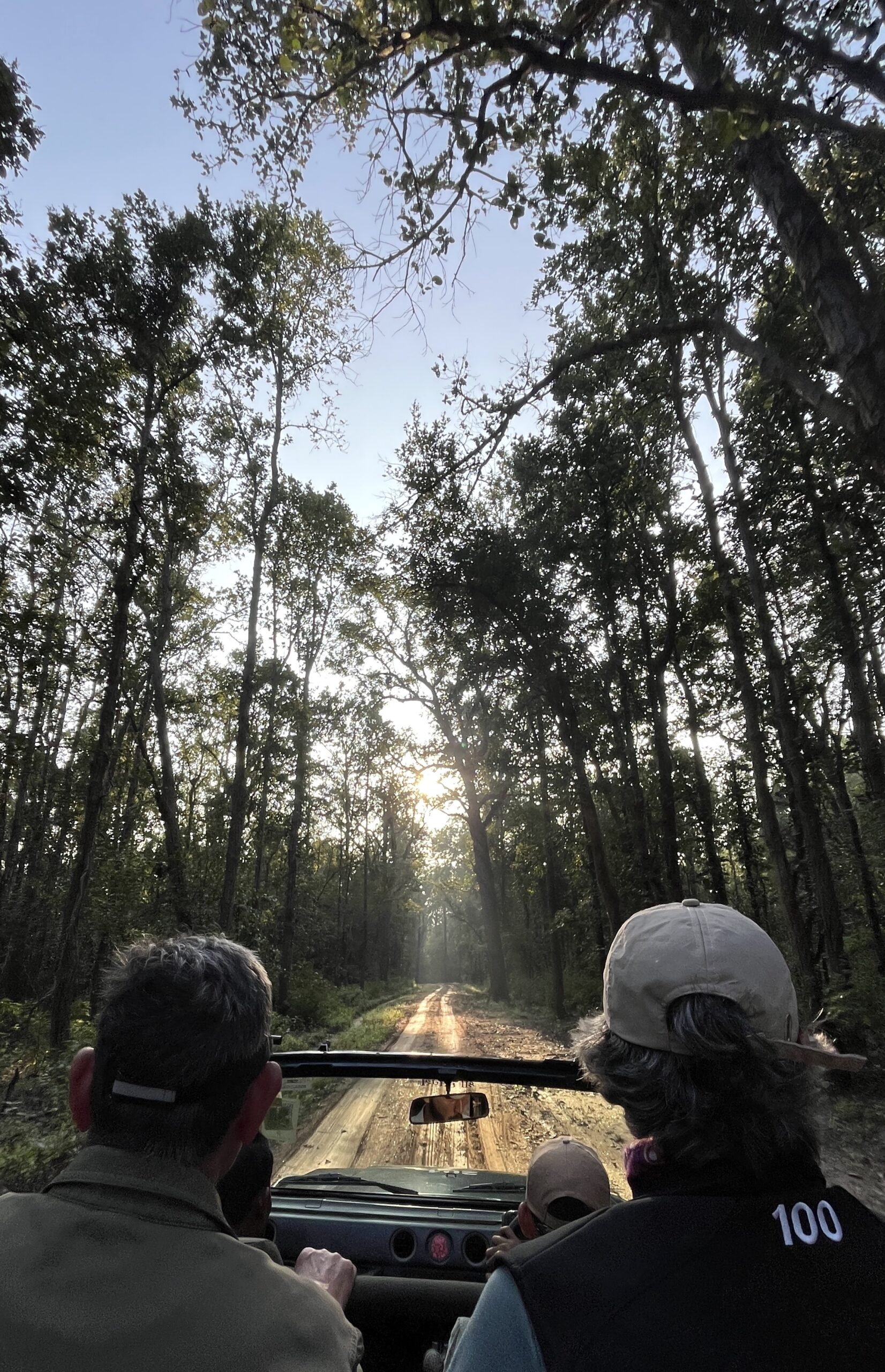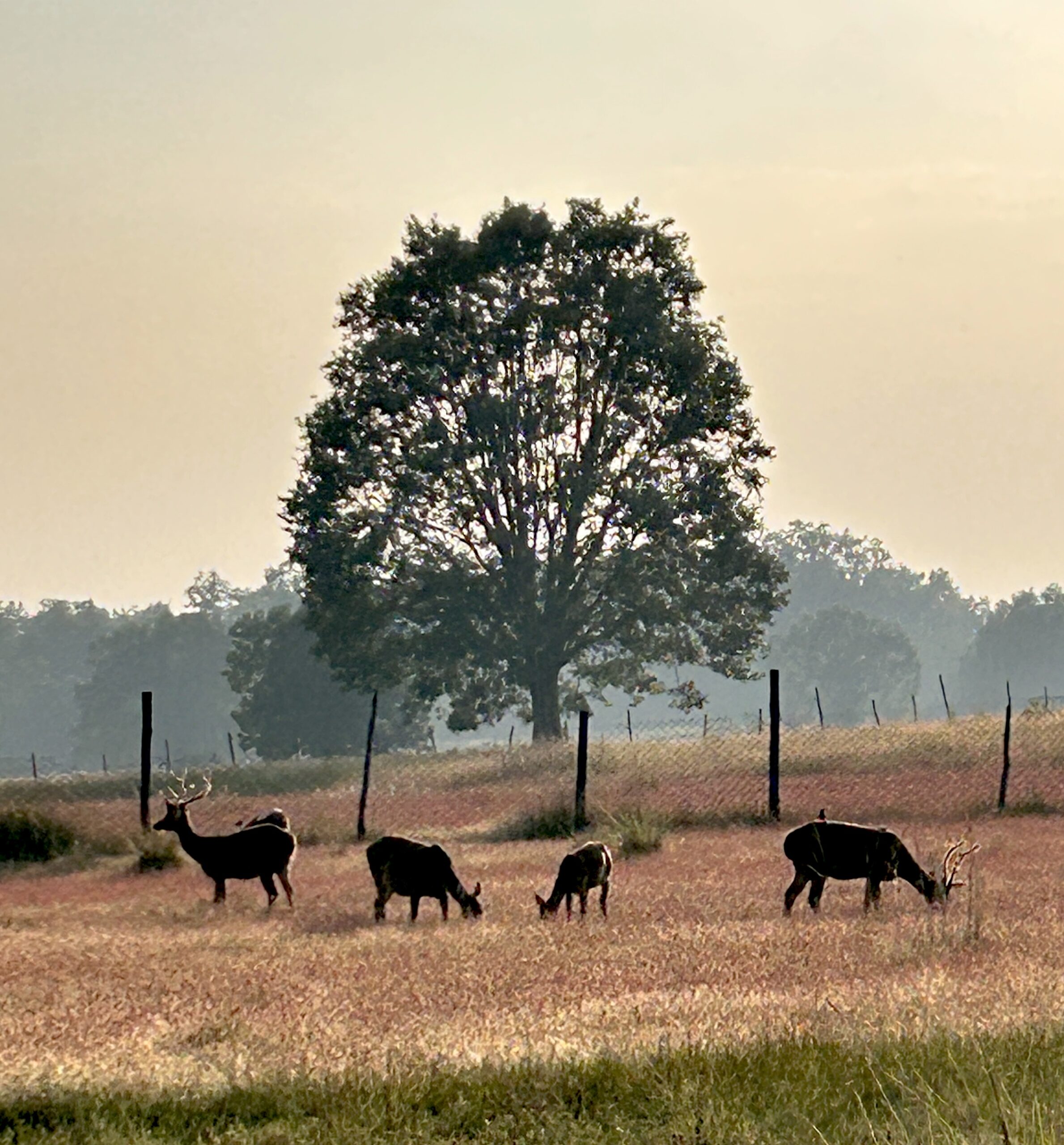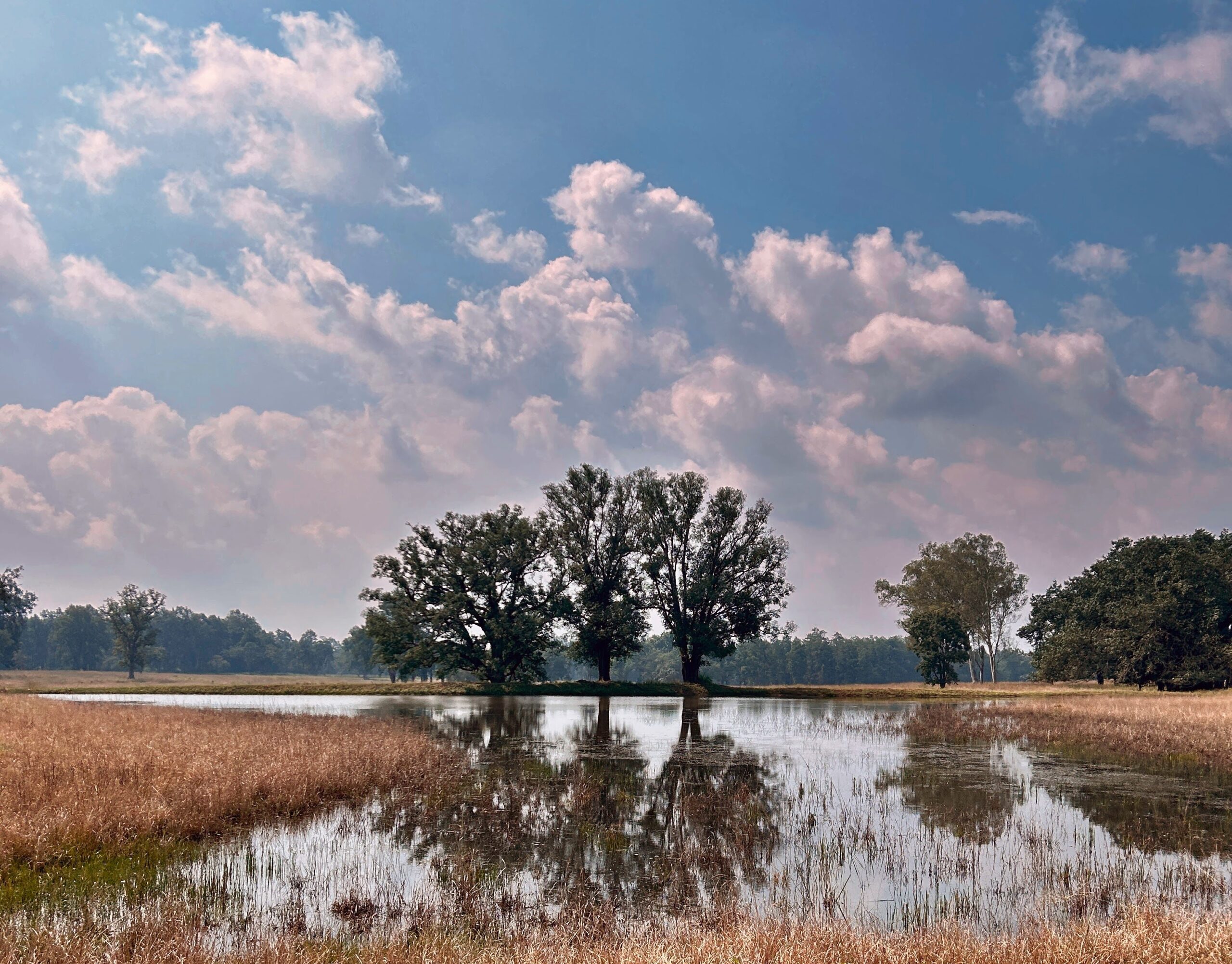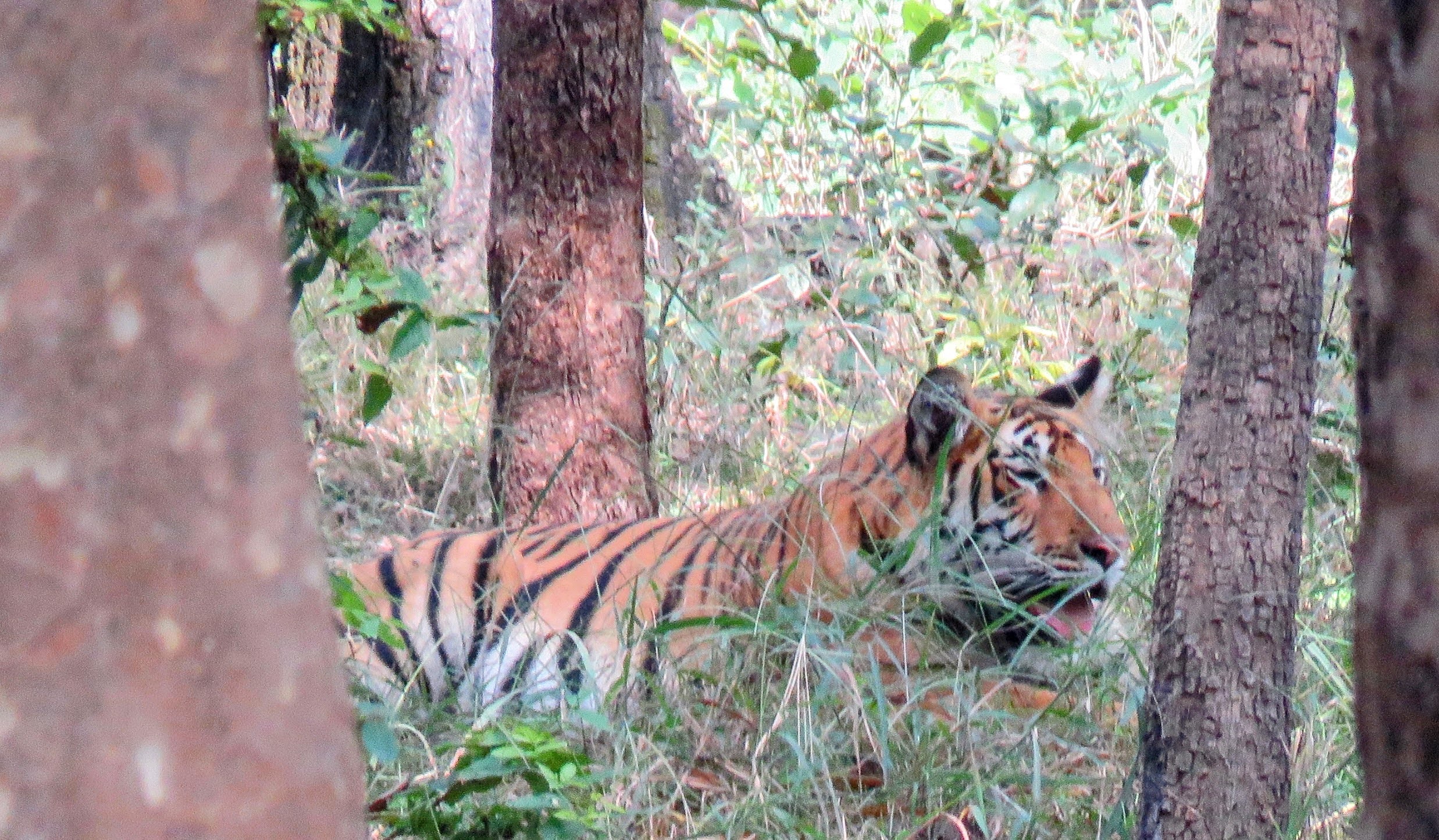A Whisper from Kipling’s World
There’s a moment when you enter Kanha and the forest closes around you—the light dims, the cicadas stir, and you half expect Bagheera to slip through golden grasses of the meadows and the clumps of bamboo that creak creak in the tender breezes. Kanha is perfect for a writer.
And everyone’s here to try to see tigers in the wild. Kanha is contiguous with Pench and the Seoni Hills, all names that Kipling’s The Jungle Book would be familiar with. And its soul still hums with the same wild music. Here, in the shining gold and emerald heart of Madhya Pradesh, you begin to understand how Kipling was immersed in stories and seemed perfectly at home despite his colonial heritage. Listen carefully to Kipling, and the Hindustani cadences are unmissable to those with the discerning ear.
“For the strength of the Pack is the Wolf, and the strength of the Wolf is the Pack.” — Rudyard Kipling
Animals of Kanha – Quick Look
Kanha is India’s great conservation epic. Spread across the Mandla and Balaghat districts, its meadows roll like green and golden seas under the watch of the ancient Satpura hills.
It is here that the Barasingha, the Hard Ground Swamp Deer, made its final stand. Once near extinction, it was saved by quiet, tireless human effort to conserve the land that brought us all to life. Today, Bhoorsingh the Barasingha stands proud as the park’s mascot—a symbol of redemption.
Around him, life thrums in the 900+ square km sanctuary:
-
Tigers pad silently through Sal forests, startling langurs to shriek out their danger call.
-
Leopards, gaur, and sloth bears move like forgotten myths.Are they watching us silently and invisibly. Maybe having a quiet chuckle at the gawking humans?
-
Over 300 species of birds turn the air into a living orchestra—bee-eaters flashing emerald and gold, hornbills croaking from the treetops, serpent eagles tracing lazy spirals, and everywhere the peacocks preening and strutting through the grasses, flashing their green and peacock blue like signals in the midday heat.
When to Go: Feel The Pulse of the Jungle
Kanha is open from mid-October to June, resting during the monsoon.
-
April to June is the watcher’s season—heat draws tigers and deer to shrinking waterholes.
-
Winter mornings bring ghostly mists rising from meadows, perfect for photographers and poets alike.
Avoid Wednesdays if you can—the forest takes a half-day to breathe.
How to get to Kanha
Kanha is in the heart of India. If you’re coming in from outside India, you will need to land in any New Delhi, Mumbai or even Bangalore, and then fly to Jabalpur, Raipur, or Nagpur, then journey by road to the forest gates of Khatia or Mukki. Ask your accommodation to arrange a taxi for you.
The drive itself feels like a slow shedding of civilization—the roads narrow, the trees lean closer, and the air begins to smell faintly of Sal resin and wild lemongrass. Stay anywhere from a forest-fringed homestay at Shergarh to the plush Banjaar Tola. In Kanha, even luxury tends to whisper rather than shout, hiding at the edges of the forest. Do ensure you book ahead.
The Safari: Learning to be Still
Safaris in Kanha aren’t just about seeing a tiger—they’re about learning to wait. And learning to see more than tigers. Tigers may be burning bright in the hills and meadows, but there are also other animals and birds to see in their natural habitat. Here’s what you must do:
You book your jeep through the MPOnline portal, weeks in advance. You rise before dawn, when the stars still tremble above the Sal canopy. You line up at the Mukki gate in a short line of permitted jeeps with your permit and and you wait for your guide to jump into the jeep and you set off into the darkness of the tree covered forest. the driver and the guide chat about where the last sighting was, and they text to and fro with their mates in other jeeps.
And then, you wait—for a pugmark, a call, a shadow moving through tall grass.
If you’re lucky, you’ll glimpse a tiger—perhaps Umarpani, the great male of legend—emerging like a thought from the forest. But even without him, the jungle teaches patience, humility, and a kind of reverent quiet that no city ever can. The call of the langur shatters the quiet, and the jeep negotiates muddy tracks and narrow bridges at great speed to get to the place the tiger may be seen. And if you’re lucky, you see her, or him. I learn that every tiger, some 155 of them, have identities, they are catalogued, their unique stripes noted, and named by temperament or location – Sharmilee, the shy one, or the usurping daughter who pushed her old mother out. Or the one-eyed tiger who hid and waited.
Travel Writer’s Style Tips
Ok, maybe you didn’t come to read this for style tips. This is not for your fashionista – but you must dress right. I had to abandon my pinks and bright colours for a while. For a writer, black and white should be enough? or camouflage?
-
Wear earth tones—the forest prefers discretion.
-
In winter, layer warmly; in summer, travel light.
-
Always bring binoculars and a notebook—not every treasure can be photographed.
-
And above all, bring time. Kanha reveals itself only to the unhurried.
- Wear a hat.
An Author’s Reflection
As a writer, I found Kanha riveting in a different kind of way. Its stillness resets something inside you—the way the jungle breathes, the rhythm of bird calls fading into mist.
There’s a story in every track, a metaphor in every fallen leaf. Kipling might have woven his tales from Pench, but Kanha keeps the echo alive—a reminder that the wild isn’t a place we visit; it’s a truth we remember.
We all long for Eden, and we are constantly glimpsing it: our whole nature at its best and least corrupted, its gentlest and most human, is still soaked with the sense of exile.J.R.R. Tolkien.
For Writers Who Need to Disappear (and write)
I’m planning a writing retreat here. Limited spots. No workshops, no forced sharing circles, no mandatory “creative exercises.” Just protected time, this space, and the permission to finally do the deep work you’ve been postponing. Or maybe a workshop or two. Or Art.
What you get:
- A tented luxury room
- Mornings of productive creativity
- The kind of quiet that lets you hear yourself think , or ink
- Optional evening discussions about craft—only if you want them
- A location I’m not posting publicly (you’ll get exact details when you commit)
- The accountability of other creators doing the same work
What you don’t get:
- WiFi strong enough to doomscroll (it’s there, it’s just weak enough to keep you honest)
- Distractions disguised as networking
- Excuses for why you didn’t finish that project
Who this is for:
- Writers finishing manuscripts, essays, or content series
- Creators who need to batch content without the usual interruptions
- Anyone who’s tired of “writing retreats” that are actually just expensive vacations with laptops
- People who understand that sometimes the best thing you can do for your work is get out of your own environment
Interested? The lane doesn’t appear on most maps. And I’m keeping it that way.
Contact me directly for retreat dates, pricing, and the exact location. Limited to 8 writers per session.
Because the question isn’t whether you need this kind of space. The question is: are you willing to look the tiger in the eye?





